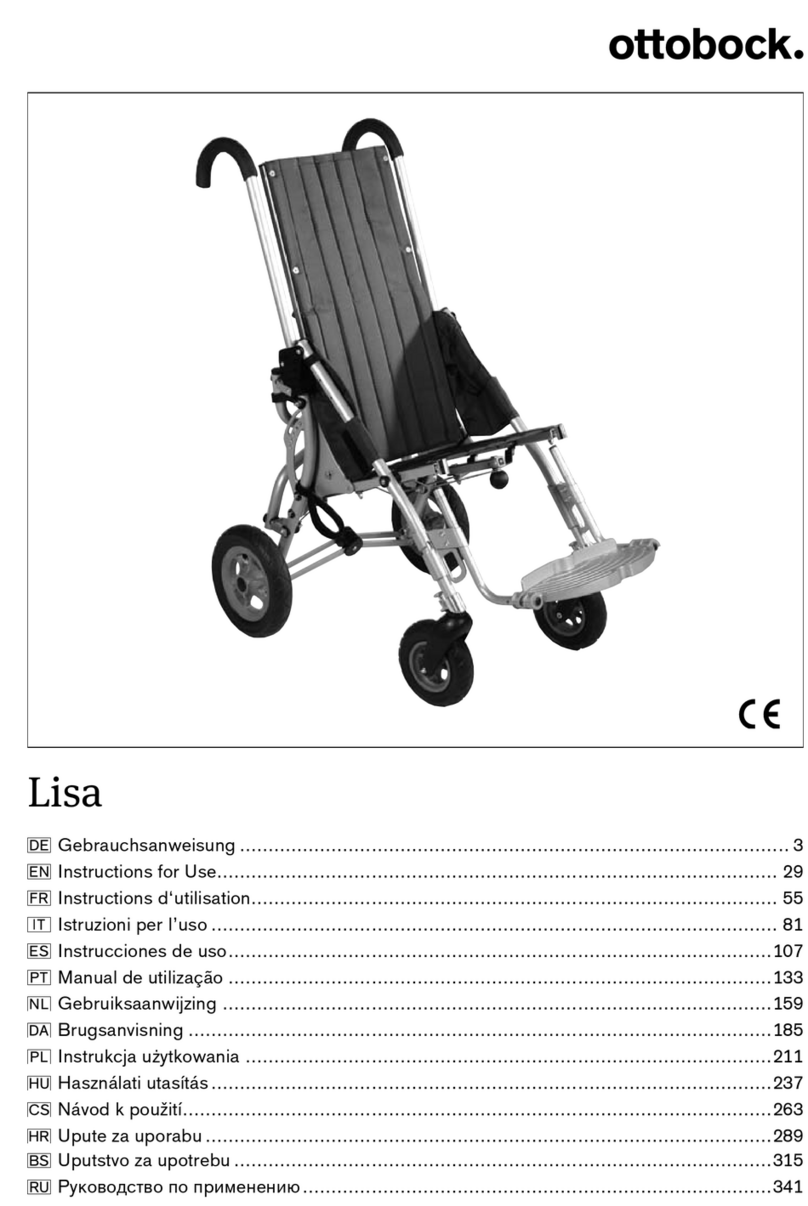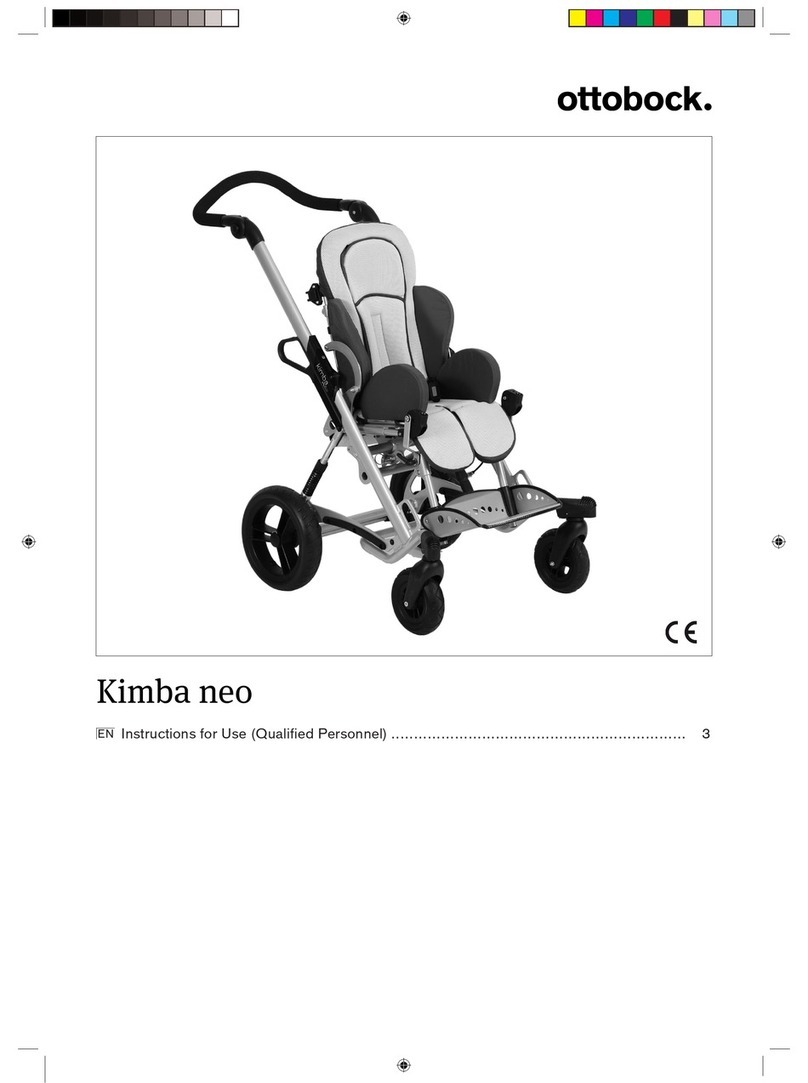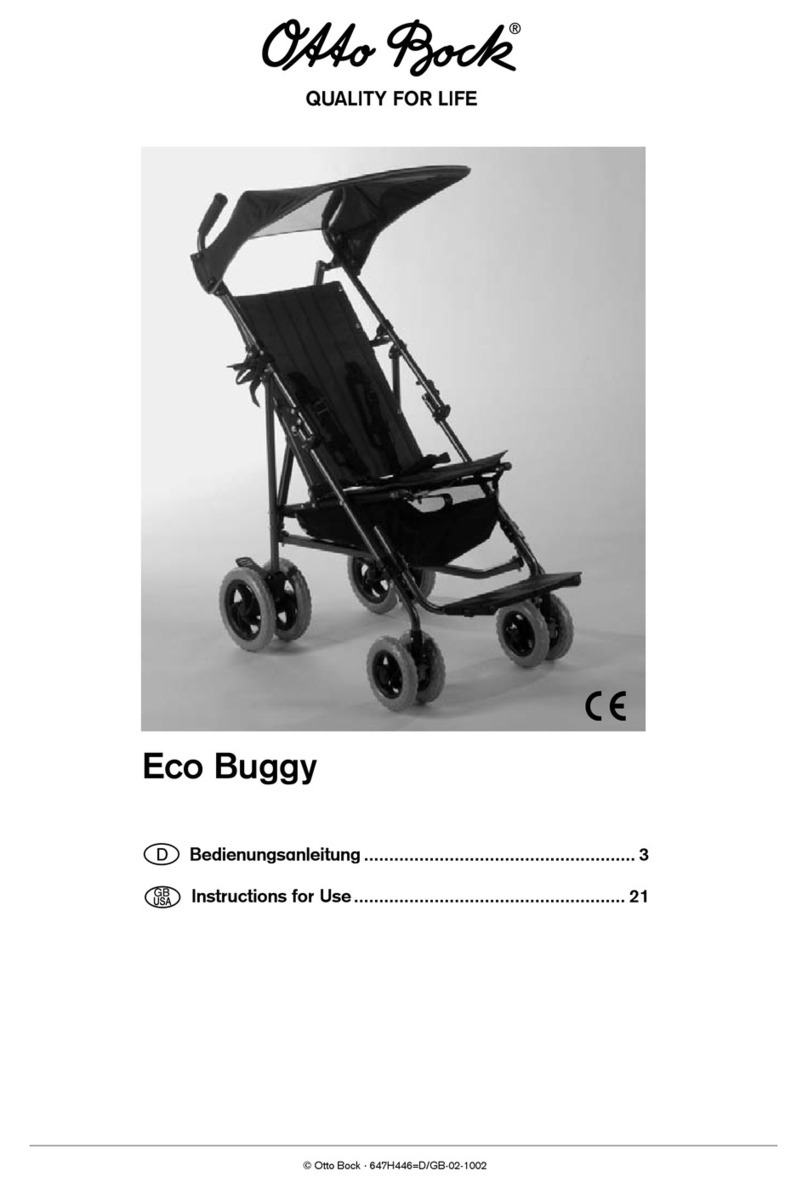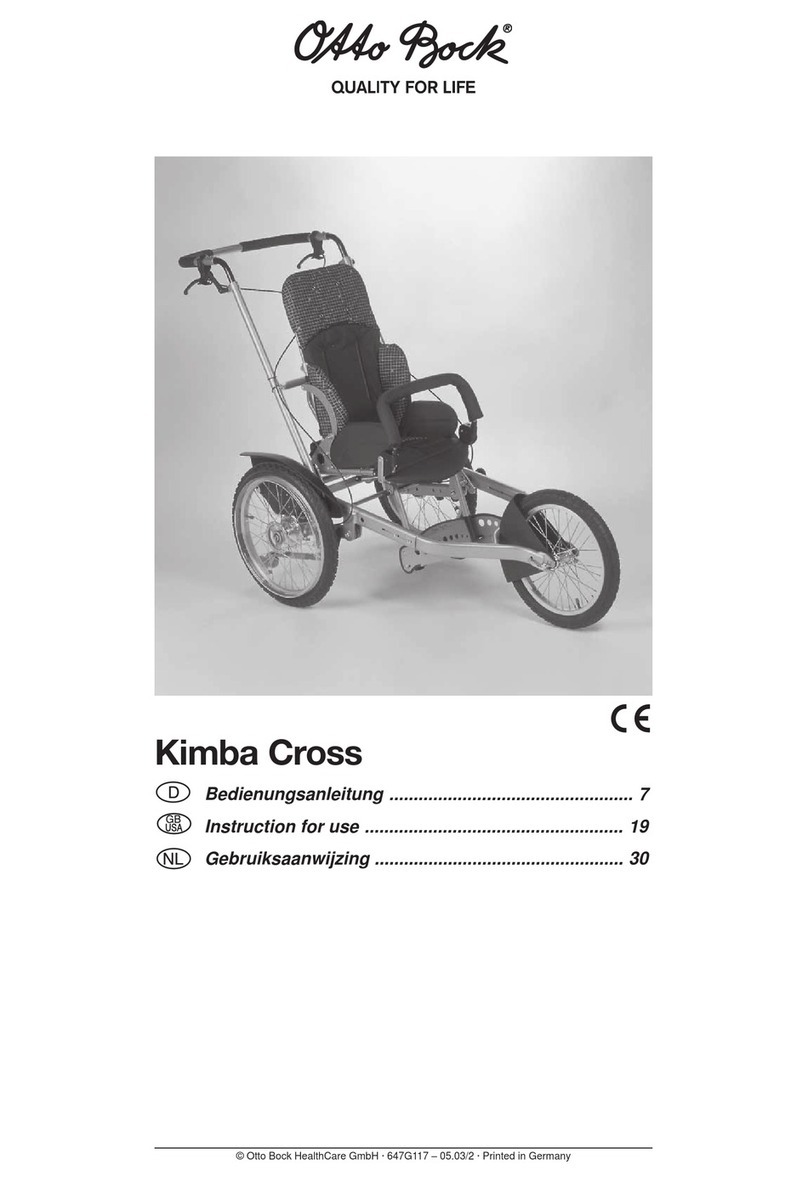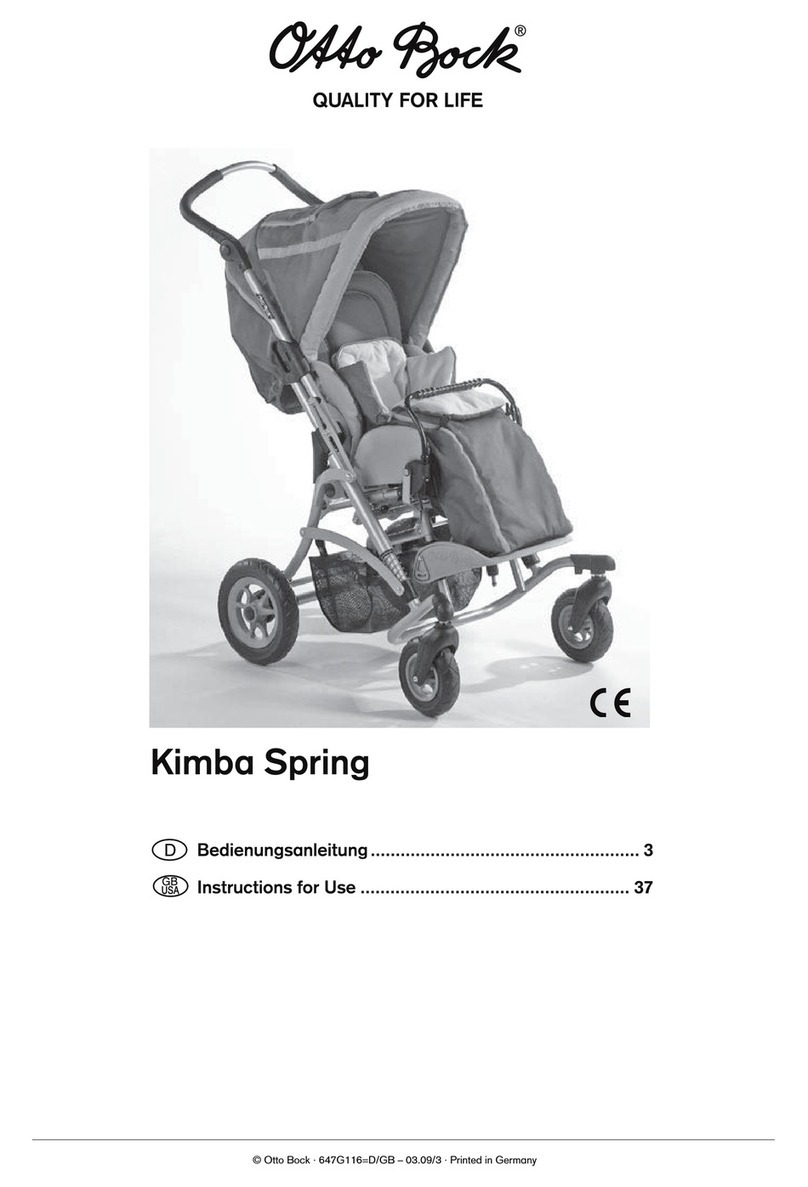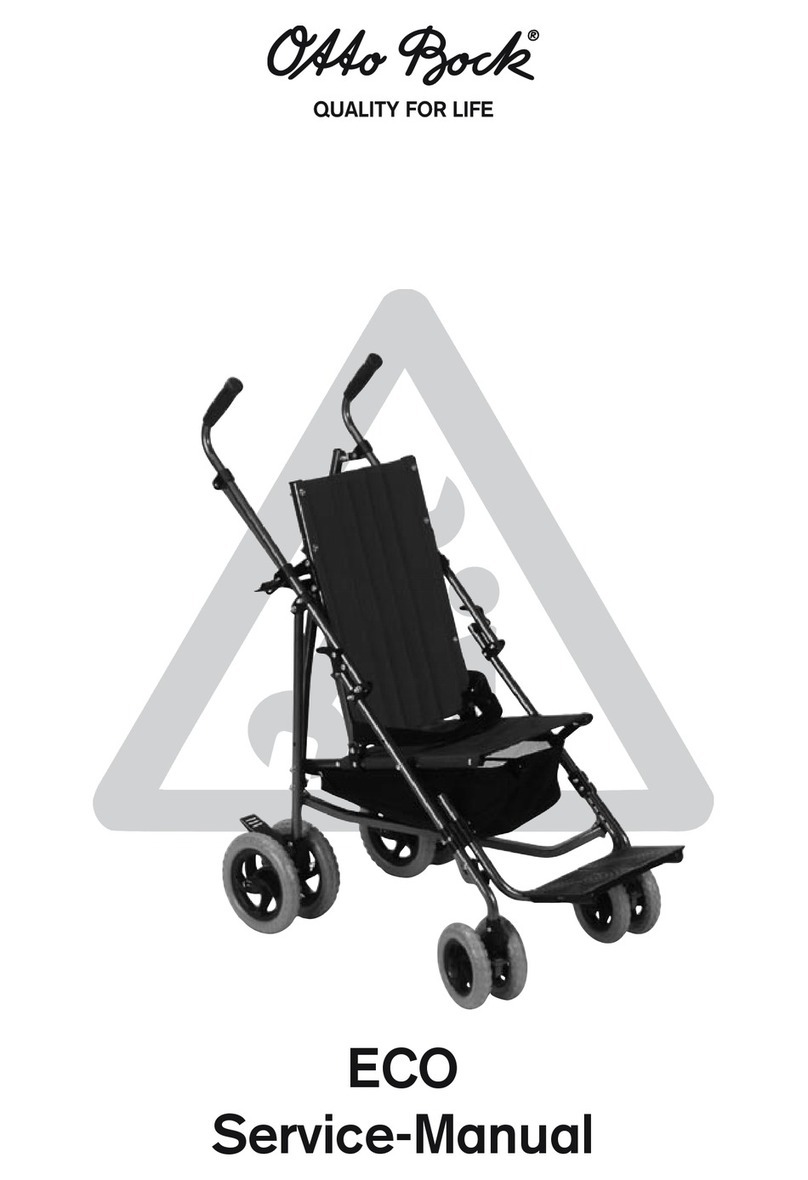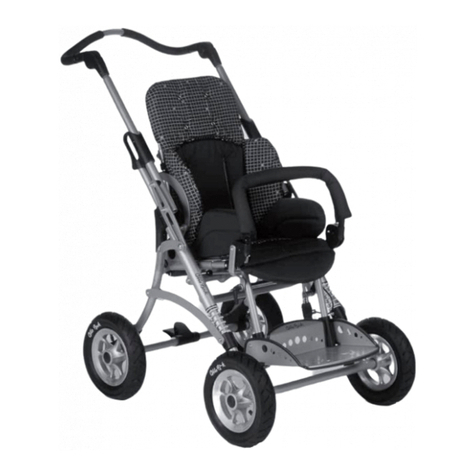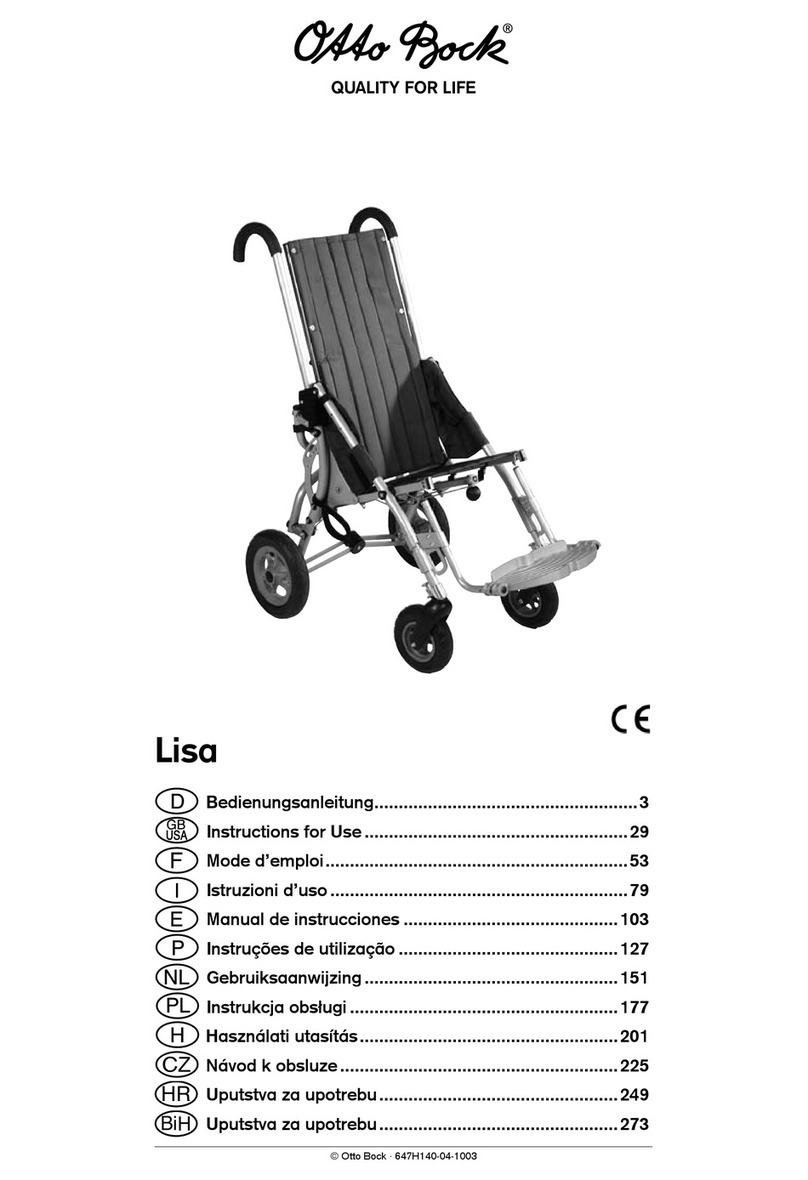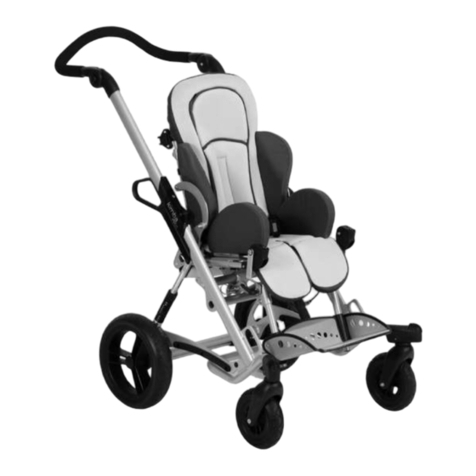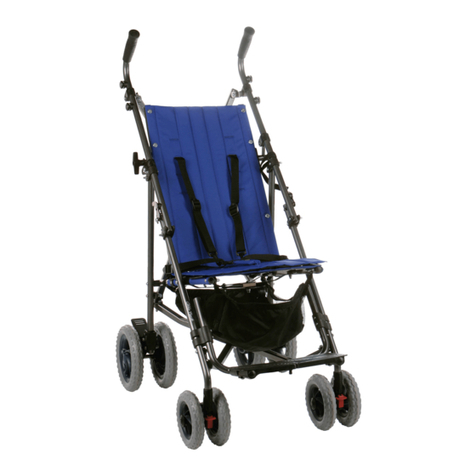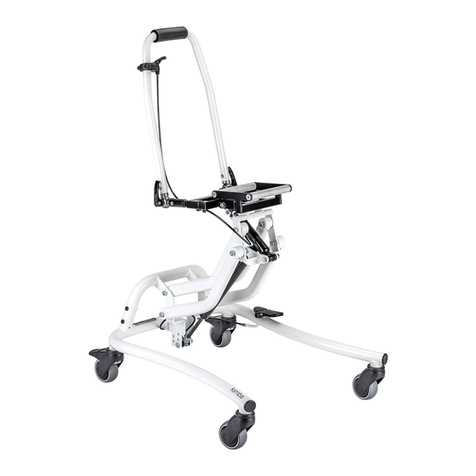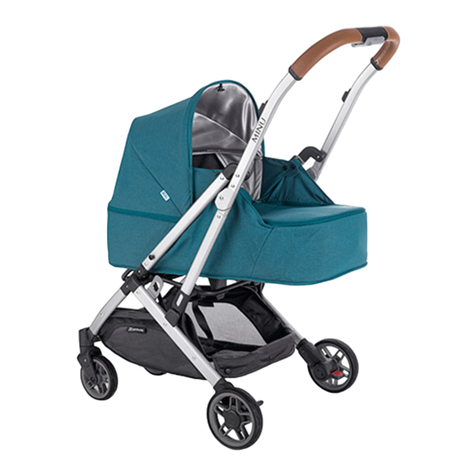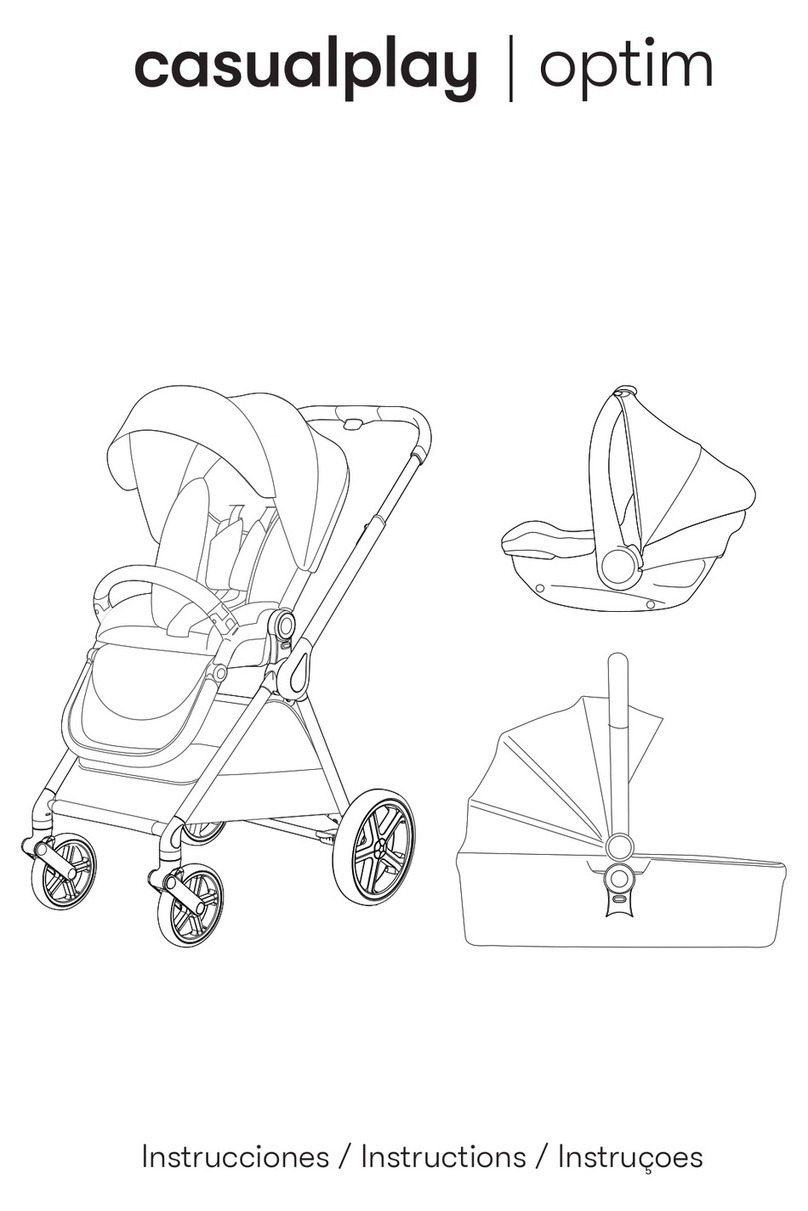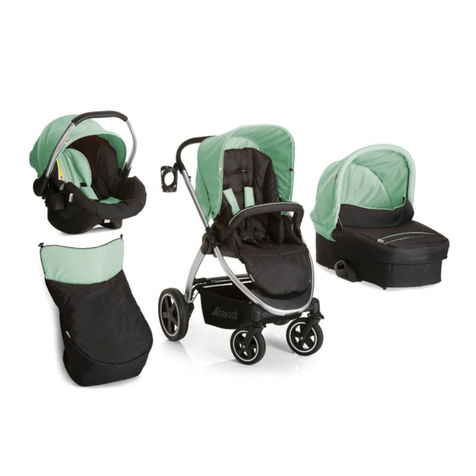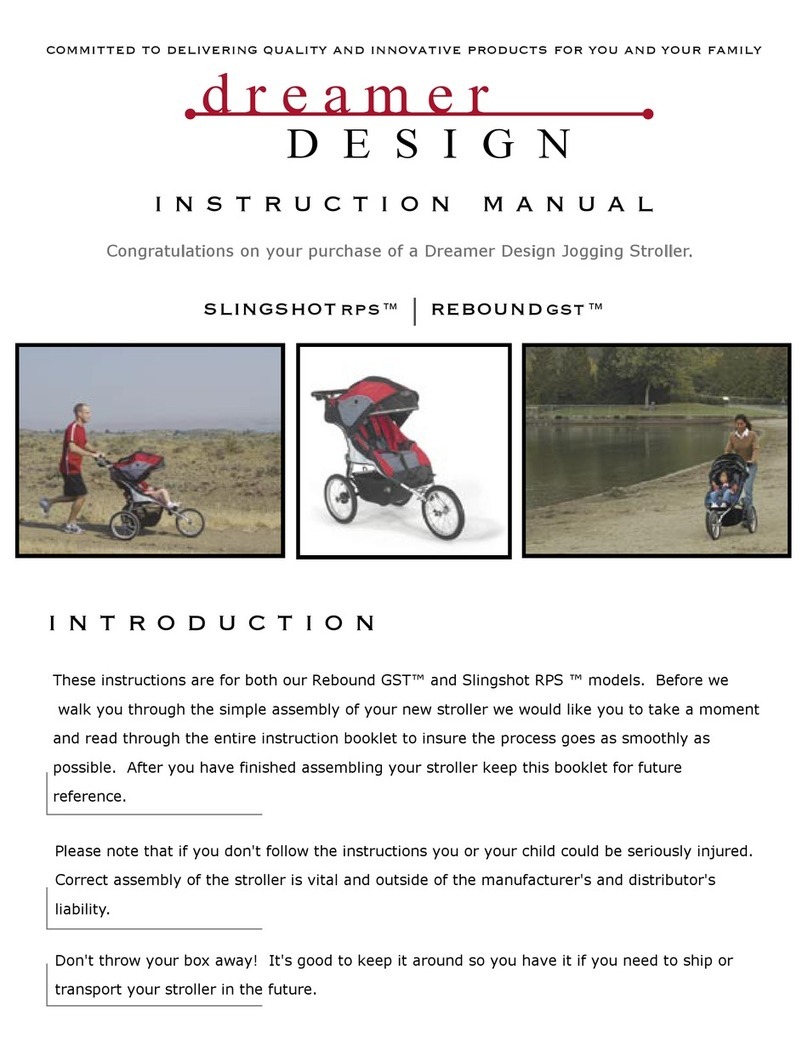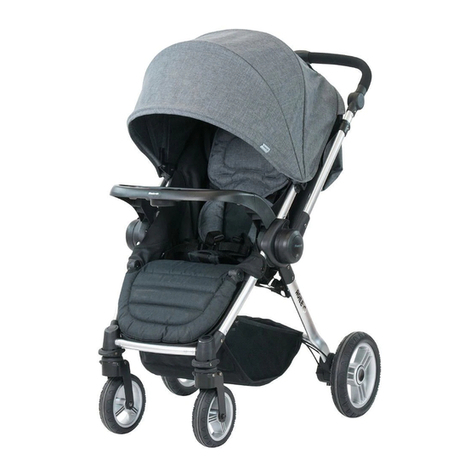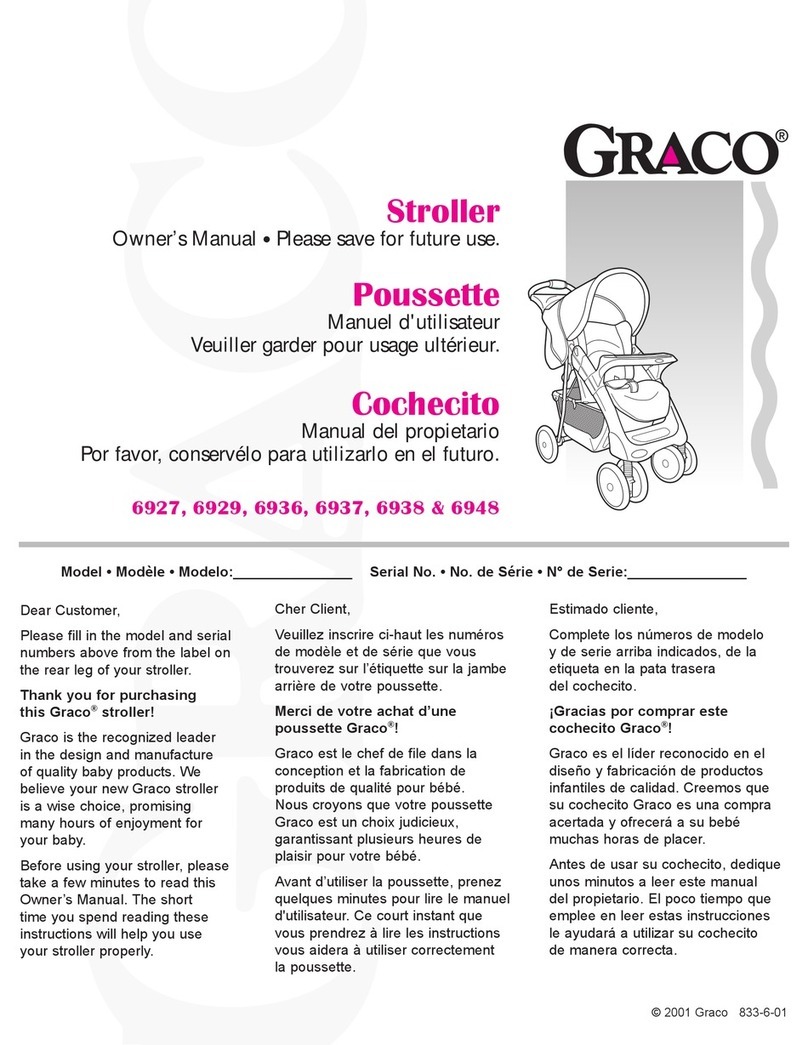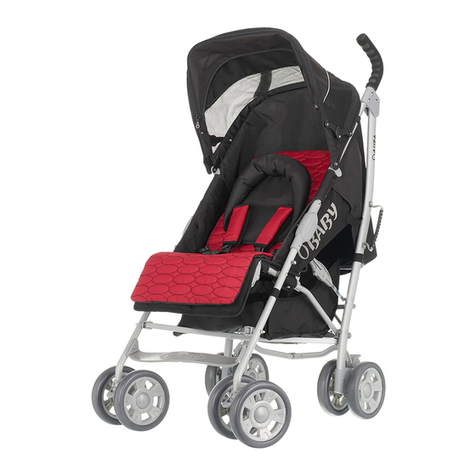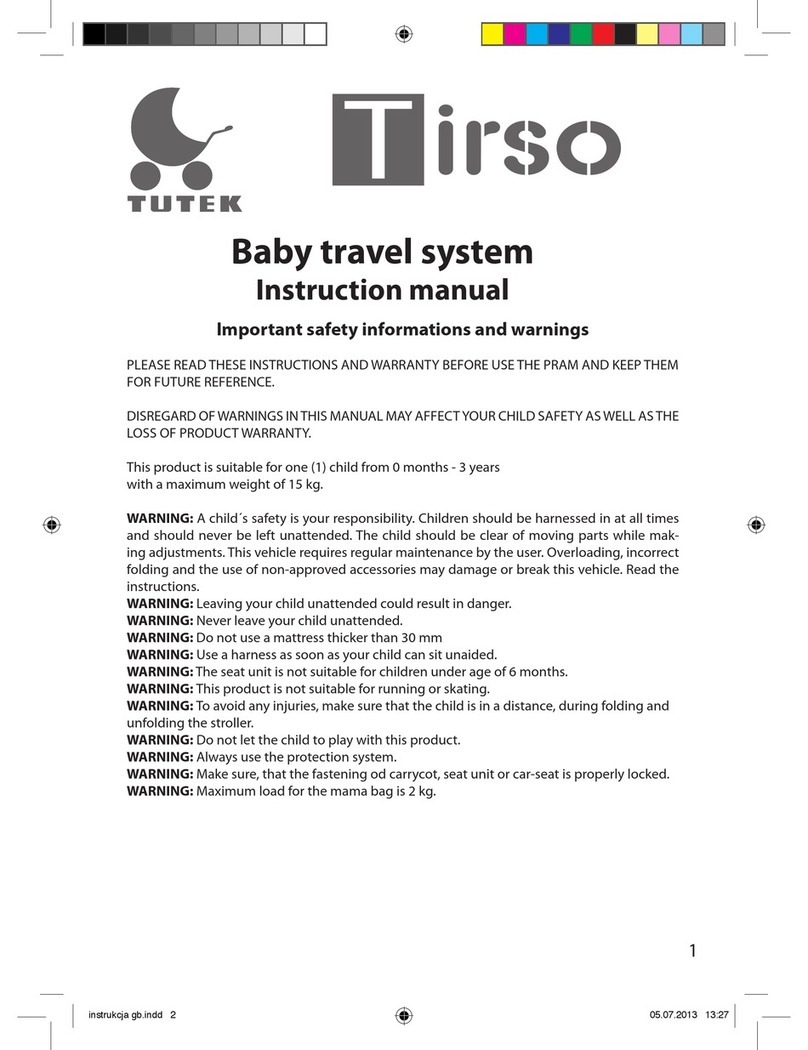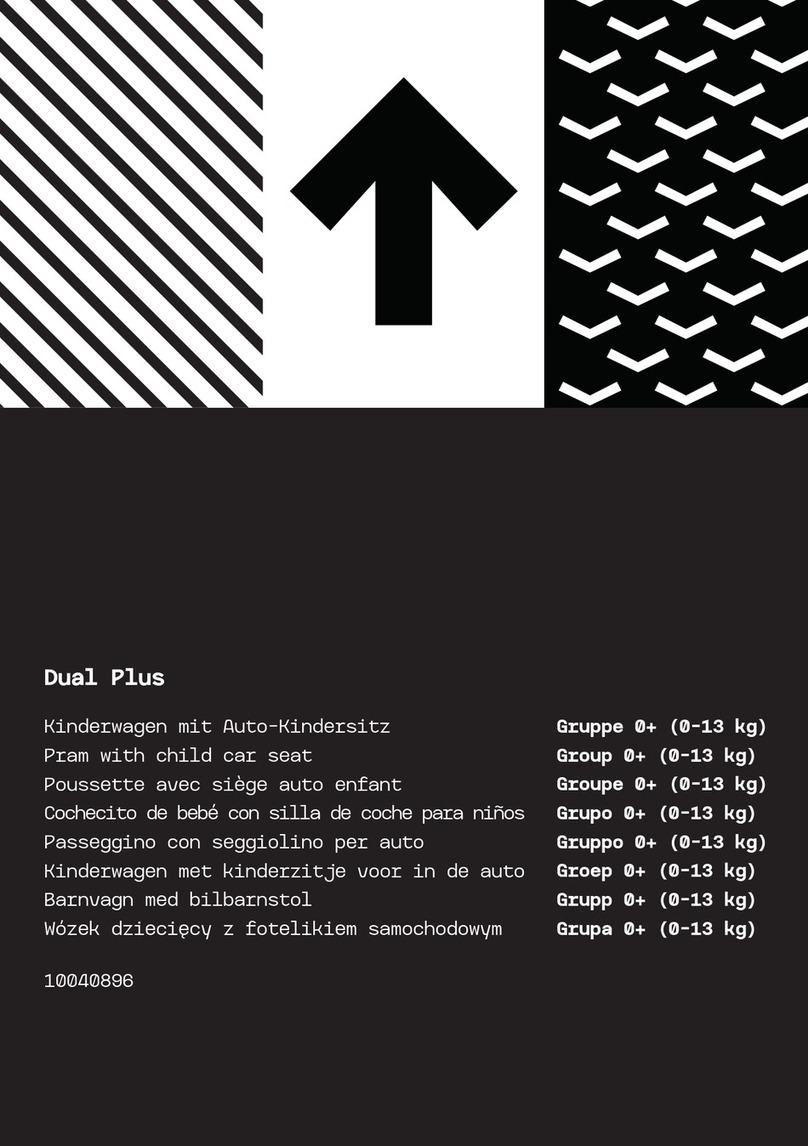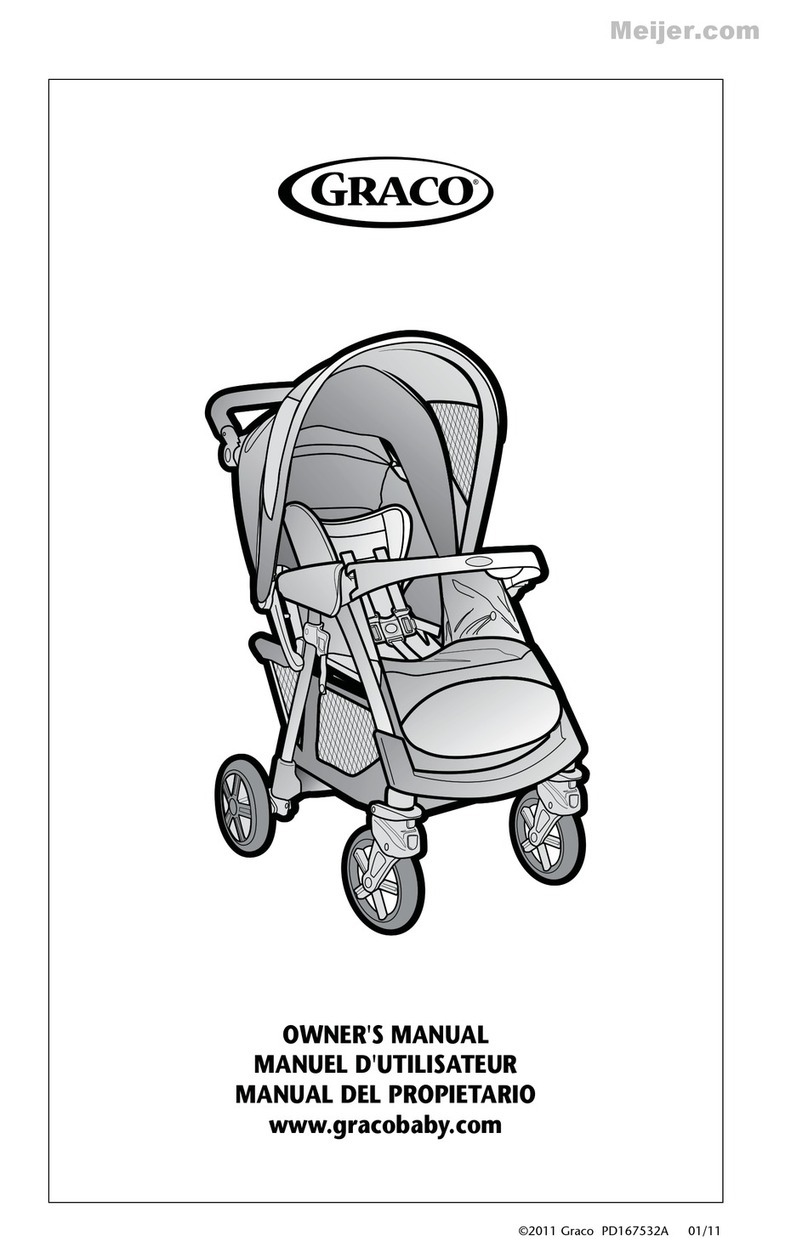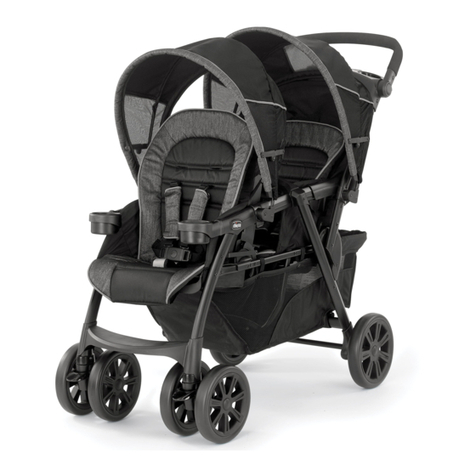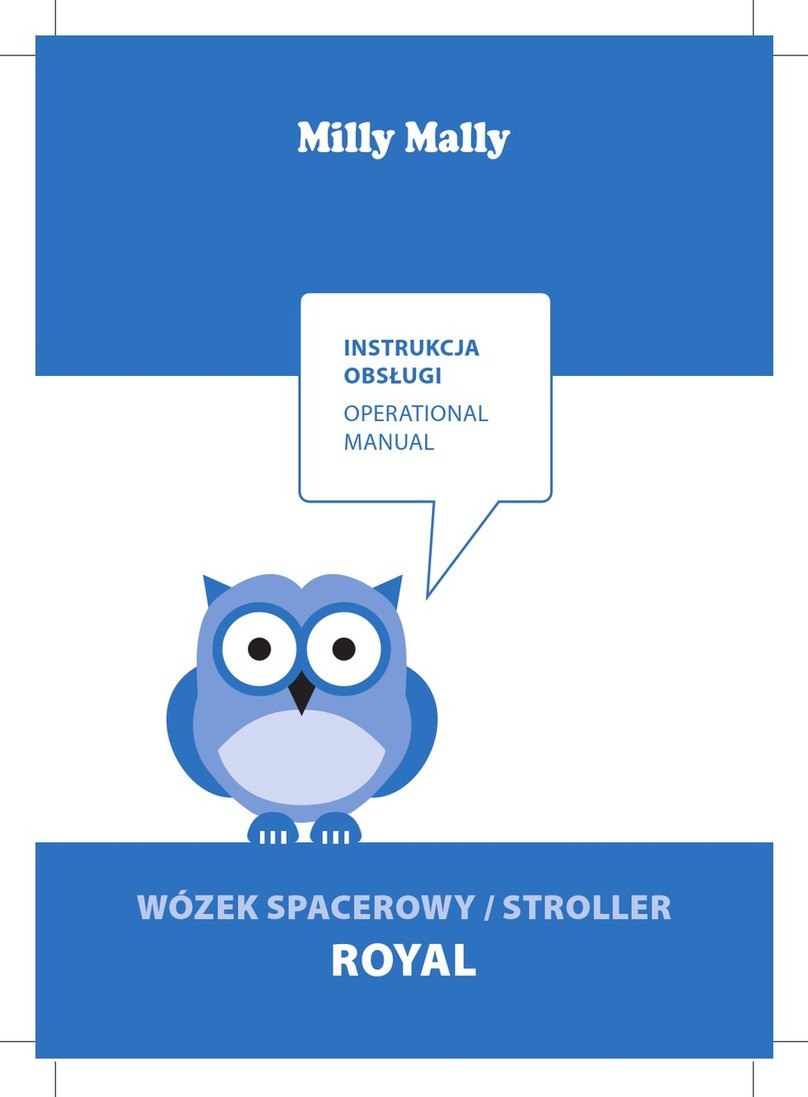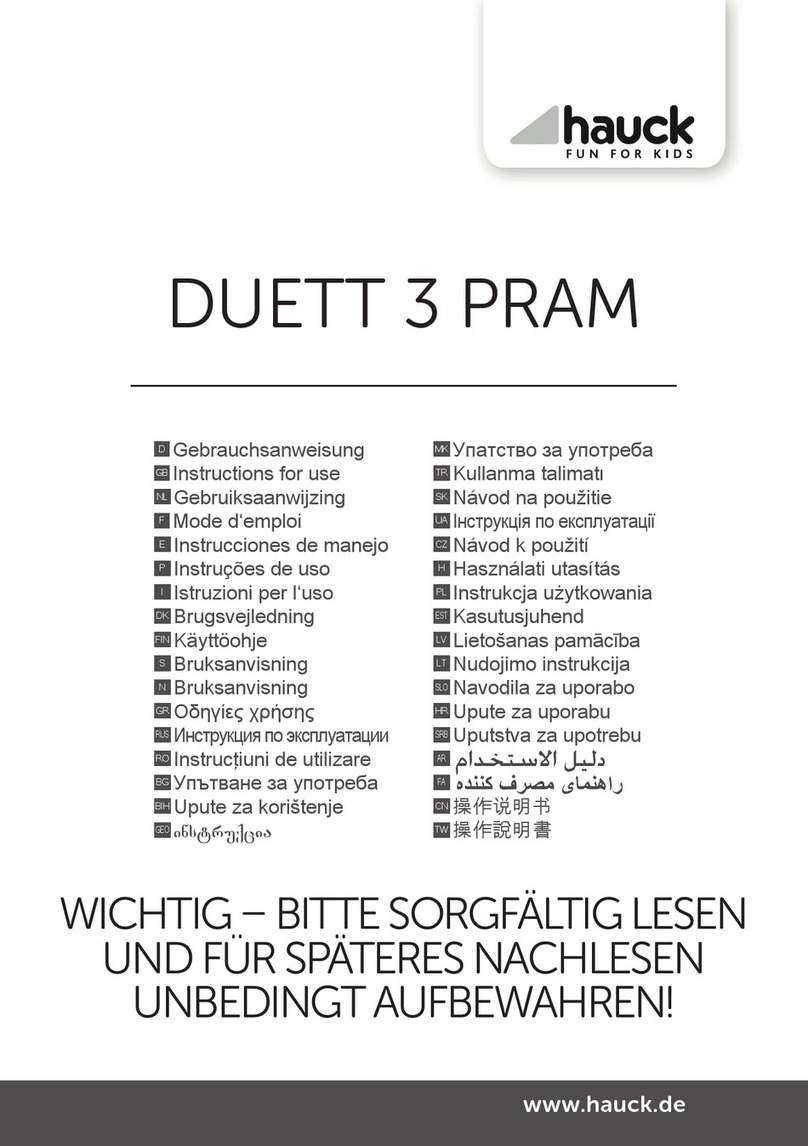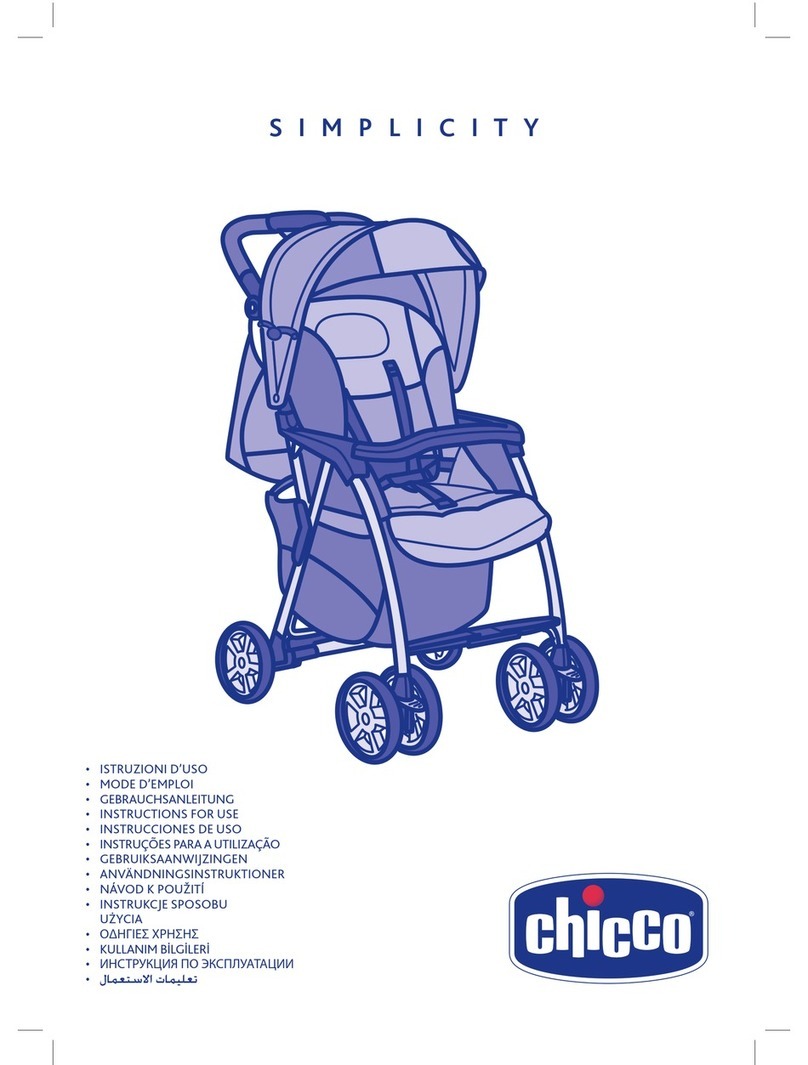10
Unpacking and Preparing the Buggy for Use
The original package contains the following components (see picture on the front page)
• Buggy, folded, with enclosed footrest
• Instructions for use and necessary tools
• Accessories as ordered
For assembling the footrest, please proceed as described under „Adjusting the Footrest Height“ (fig. 14)
For unfolding the buggy please proceed as follows:
• Remove any transport straps or transport guards (fig. 1).
• Grasp the buggy at the push handles (fig. 2) and unfold it as far as possible (fig. 3 and 4).
• Engagethefolding guardson therightand leftbygraspingthebuggy atthepush handleandatthecorresponding
front frame (fig. 5) and slightly pressing towards the ground.
•Make sure that both folding guards are closed (fig. 6).
• Press the folding lever (fig. 7) up to the stop to unfold the scissor construction.
• Turn the footrests (fig. 8) from the outer to the inner side and flip down the footplates.
• Insert the holding bracket with the tip first into the long hole and laterally bring the footplates together until you
hear the ratchet bolt engage.
Before using the rehab buggy, the footrest must be closed and engaged, otherwise it will cause the front
frame to strain / bend.
Attention, danger:
Do not grasp the buggy at other point other than the described components. Especially, do not grasp the
components of the scissor mechanism.
For folding the buggy please proceed as follows:
•Bring the backrest in the most anterior position (fig. 9).
• Release the locking bar below the footrest (fig. 10) and pull the footplates apart.
• Swing the footplates to the outside beside the front wheels (fig. 11).
• Pull open the folding scissor below the seat (fig. 12).
• Open the folding guards on the right and left at the front frame (fig. 13).
• Now proceed as described under "Unfolding", but in reverse order.
Adjustment and Adaptation Possibilities
Swivel Lock (fig. 11)
To engage the swivel lock, push the red locking slide upwards. For opening, push the locking slide downwards.
Adjusting the Back Inclination (fig. 9)
After loosening the thumb nuts, the back inclination is continuously adjustable.
Retighten the thumb nuts.
When making adjustments under load unscrew the thumb nuts to a certain degree only and make sure to
make controlled adjustments, for example by supporting the backrest with your thigh.
Sudden adjustments of the back inclination under load can cause the buggy to tip over.
Please ensure after any adjustments made all thumb nuts should be retightened.
Adjusting the Footrest Height (fig. 14).
After opening the screws the footrest height can be adjusted using the different holes at 2 cm distance.
To do this, you need a Phillips head screwdriver, which is not included in the delivery.
Activating the Wheel Locks (fig. 15)
To close the wheel locks, press the release lever downwards with your foot.
To open the wheel locks, press the release lever upwards with your foot.
Always ensure both wheel locks are engaged.
Accessories
All accessories which have not yet been installed by the manufacturer must be installed by skilled staff.
Storage Bag (fig. 16) max. 5 kg
The storage bag is attached to the anterior frame on the left and right by means of screws and to the posterior
frame by means of push buttons. It can be filled from the both the front and rear beneath the seat.
